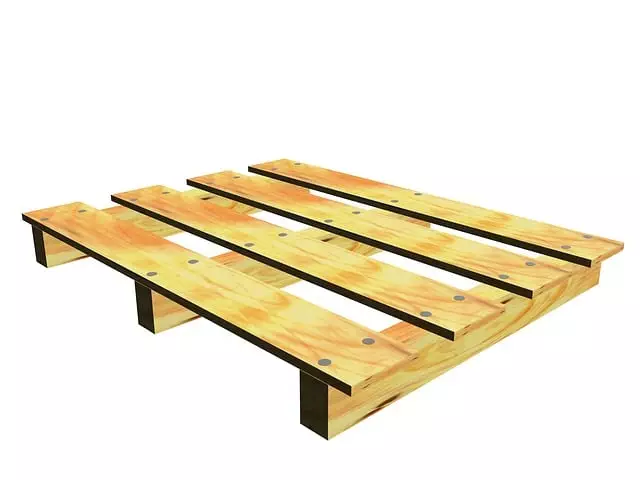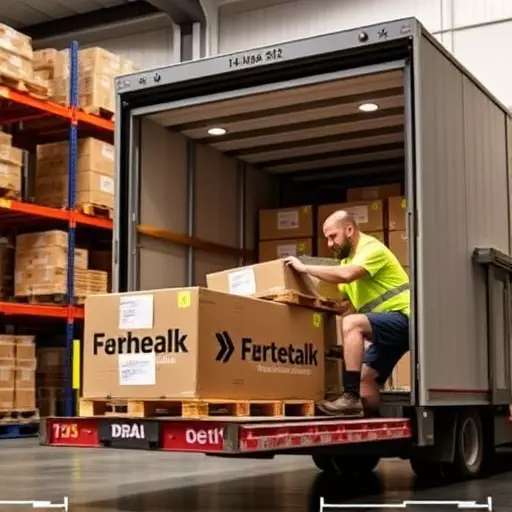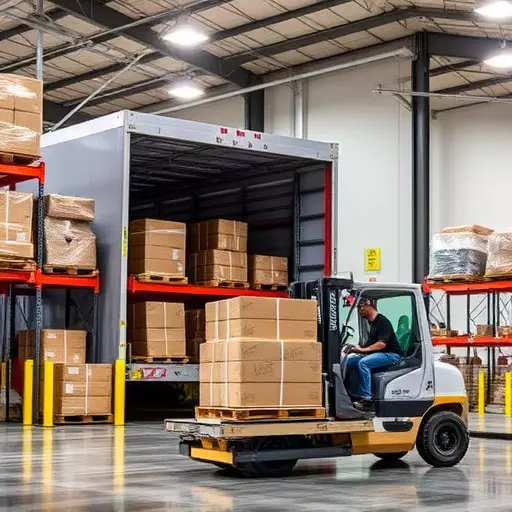Regular maintenance is crucial for efficient and safe loading and unloading operations in Holland, Ohio. This includes structured inspection routines with pre-use and post-use checklists, ensuring optimal equipment function and identifying potential issues early. Lubrication programs and timely part replacements minimize wear and breakdowns. Additionally, adhering to detailed unloading safety protocols, such as secure load fastening and hazard recognition, enhances worker protection in high-traffic areas, streamlining overall warehouse efficiency while prioritizing both loading and unloading services.
In today’s fast-paced logistics landscape, efficient and safe loading and unloading services in Holland, Ohio, are paramount. This comprehensive guide explores best practices for maintaining crucial equipment used in warehouse loading and unloading operations. We delve into detailed inspection checklists, lubrication schedules, sensor calibration, enhancing unloading safety through secure procedures, staff training, and emergency response plans. Additionally, we optimize warehouse loading techniques with efficient layout design, automation, and cost-effective strategies tailored for peak season demands.
- Best Practices for Regular Maintenance of Loading Equipment
- – Inspection checklists for pre and post-use
- – Lubrication and part replacement schedules
Best Practices for Regular Maintenance of Loading Equipment
Regular maintenance is key to ensuring the efficient operation of loading and unloading equipment. Here are some best practices for maintaining your warehouse loading techniques and upholding unloading safety protocols. Schedule routine inspections to identify any potential issues early on, allowing for prompt repairs or replacements. This proactive approach prevents breakdowns during peak loading times.
Implement a consistent lubrication program to reduce friction points and wear and tear, especially in critical components like chains, belts, and bearings. Keep records of maintenance activities, including the types of fluids used and parts replaced. Proper training for your team on unloading safety protocols is also crucial. This includes teaching them how to securely fasten loads, recognize potential hazards, and respond effectively to emergency situations.
– Inspection checklists for pre and post-use
Regular inspection checklists are essential for maintaining the efficiency and safety of loading and unloading operations in Holland, Ohio. Before using any equipment, a pre-use checklist should be completed to ensure all components are functioning optimally. This includes verifying tire pressure, checking for leaks in hydraulic systems, inspecting chains and belts for wear or damage, and ensuring all safety features like brakes and locks are operational. Additionally, the operator’s manual should be referenced to confirm proper settings and procedures specific to the equipment.
Post-use inspections are equally vital for tracking maintenance needs and identifying potential issues early on. After every loading and unloading session, a comprehensive checklist should be followed. This involves examining the equipment for any visible damage, checking fuel or hydraulic levels, inspecting belts and chains again for wear, and verifying that all tools and attachments are secure. Implementing these thorough inspection routines not only supports optimal warehouse loading techniques but also fortifies unloading safety protocols, ultimately enhancing overall operational effectiveness.
– Lubrication and part replacement schedules
Regular lubrication and part replacement are crucial for maintaining efficient warehouse loading and unloading operations in Holland, Ohio. Establishing a strict schedule for these tasks is essential to prevent wear and tear on equipment, ensuring smooth day-to-day functions. Implementing proper warehouse loading techniques involves regularly inspecting and greasing moving parts, such as conveyors, hoists, and trolleys, to minimize friction and reduce the risk of breakdowns.
Part replacement schedules should be based on equipment usage and age. Wear-and-tear parts like belts, rollers, and bearings may need more frequent replacements compared to others. Adhering to safety protocols for unloading is equally vital; these procedures ensure that workers are protected during the handling of heavy materials and reduce the risk of accidents in high-traffic areas.


